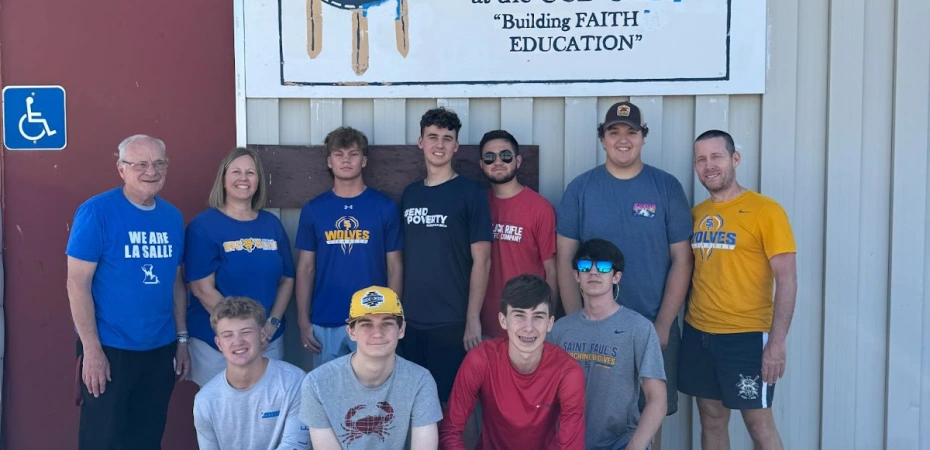
Eight Saint Paul’s students and two Saint Paul’s teachers spent a week in Browning, Montana, on an immersion trip hosted by the De La Salle Blackfeet School this summer.
Our immersion group was tasked with preparing the main school buildings on campus for the coming school year. Much of our work included shampooing carpets, power-washing the tile flooring, and restoring facilities, such as the hydroponics station and the kitchen.
We were only given a small amount of background information prior to the trip, most of which was about the history of the Blackfeet tribe. Very little was said about the actual school and the modern-day reservation.
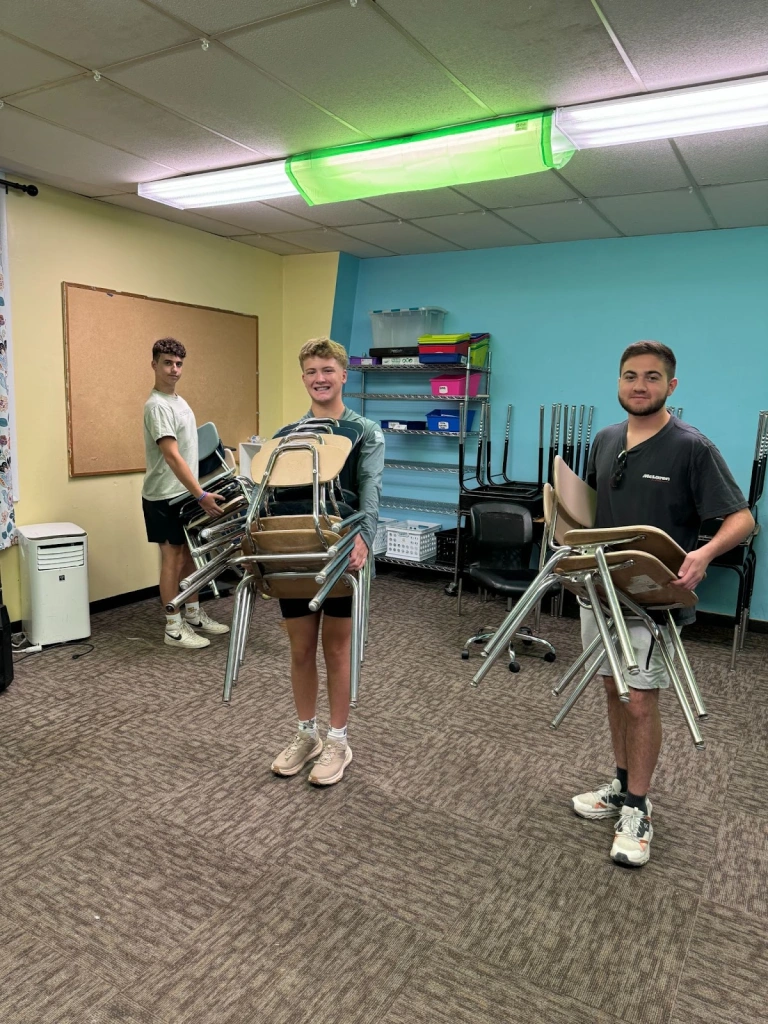
Saint Paul’s seniors Connor Schwartz, Colin Nicolini, and Ashton Adamcewicz clean out a classroom to be shampooed.
The De La Salle Blackfeet School is the only private school on the Montana Blackfeet Reservation. It is located near the center of Browning and offers education from grades four through eight. The student-to-faculty ratio is 9 to 1. For reference, Saint Paul’s School has a student-to-faculty ratio of 14 to 1, nearly double that of De La Salle Blackfeet.
Having so few students, it was clear that the teachers formed bonds with their students that weren’t found in many other schools besides Saint Paul’s. I could see a personal touch from each of the Brothers and faculty members whom I was able to work with, as they came in during their summer break for eight, nine, and sometimes ten hours a day to clean the halls and classrooms.
One of our chaperones, Saint Paul’s religion teacher, Mrs. Catherine Tonry, spoke on the matter: “It was very humbling to work alongside President Dale Mooney, F.S.C., Jim Krause, F.S.C., and other faculty and staff of the school. They truly live out the teachings of our founder St. John Baptist de La Salle with their dedication to the families living on the Blackfeet Indian Reservation.”
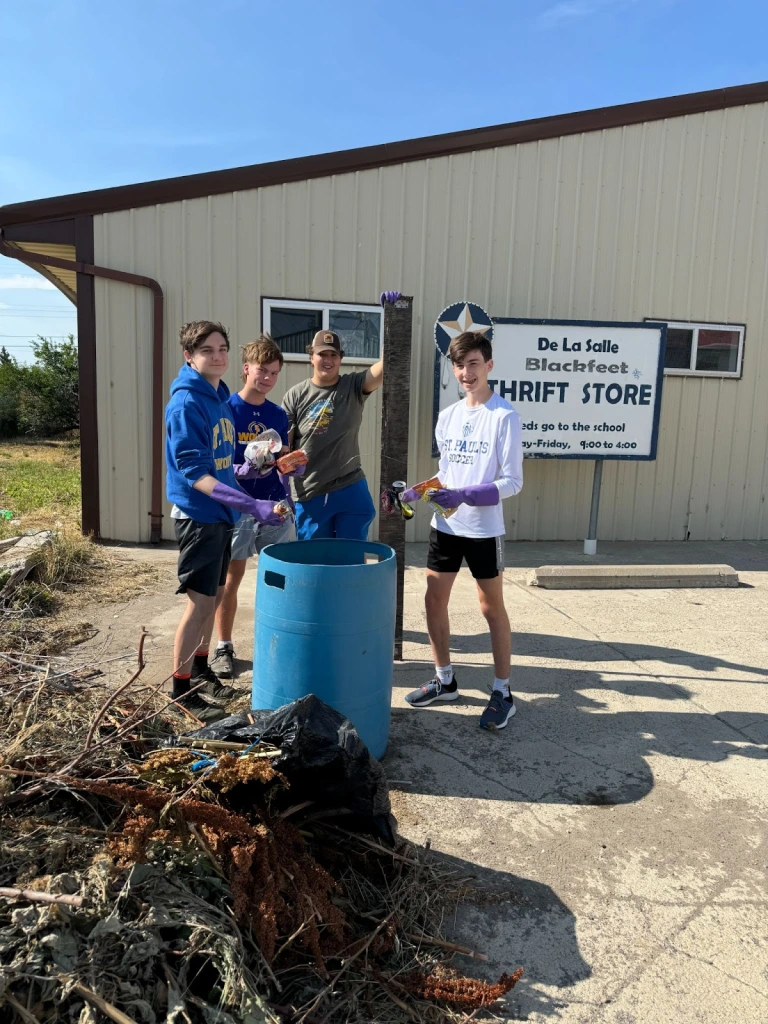
Saint Paul’s sophomore Jackson Short, junior Sidney Russel, junior Aiden McGhee, and sophomore Zachary Thomas clean a debris pile outside the De La Salle Blackfeet Thrift Store.
We were fortunate to have the opportunity to hear from many locals as well. Each one gave their personal testimony to the importance of Blackfeet culture.
One that stood out most to me was regarding Mr. Robert and Mrs. Kelly Hall, who brought their family to have dinner with us. Mrs. Hall came from Alabama, which is not far from our home state. She explained how, despite the differences between life on the reservation and life back home, her day-to-day life was more or less the same. It was an enlightening experience to speak to someone who had been immersed in Blackfeet culture for years, especially someone who came from a similar background as myself.
While fellow Ashton Adamcewicz, Connor Schwartz, and I were nearing the end of our work day, we had the opportunity to talk to one of the locals, who had apparently never left the reservation.
He came to the school to sell artwork, most of which were two-tone silhouettes done on checkbook register paper. His work consisted most prominently of scenes from nature, and he was especially interested in Blackfeet religious sites, such as Chief Mountain in Glacier National Park.
“[The artist] seemed to be called to spread his older style Indian artwork. He provided some clarification on why his art was on checkbook register paper, saying that there was a point where Indians were held captive, and to pass the time, they would write and draw revolt artwork, which he took as inspiration for a lot of his art,” said Saint Paul’s senior Connor Schwartz.
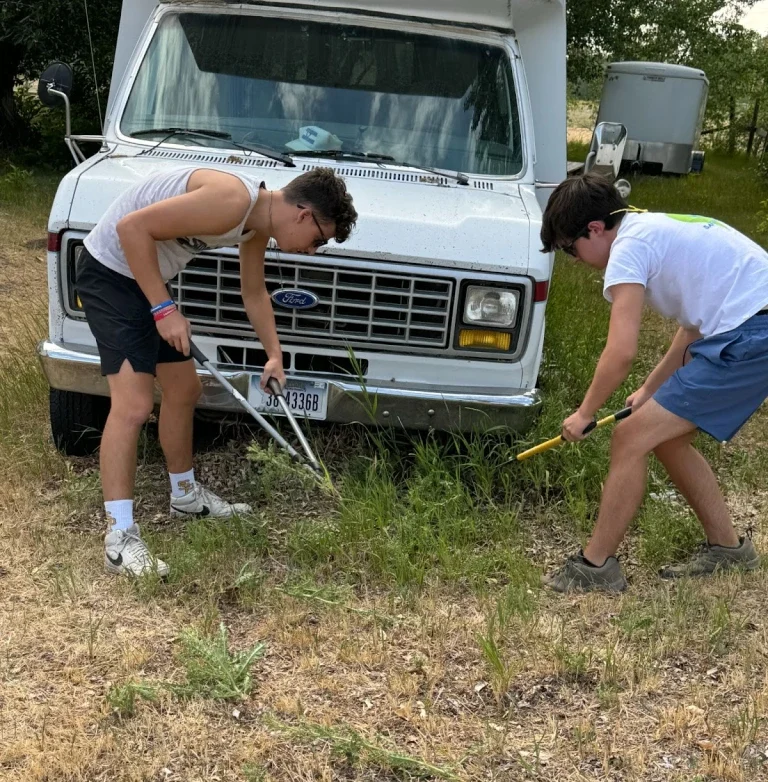
Saint Paul’s seniors Connor Schwartz and Jonah Weigel trim the bunkhouse yard.
As part of our immersion, we attended a mass with the congregation of Little Flower Parish, a Catholic church in Browning. While it was very similar in most regards to the masses here in Louisiana, I was taken aback when the songs and hymns were played with a guitar and a keyboard instead of an organ or a piano.
Another chaperone, Saint Paul’s religion teacher Mr. Fred Escher, reflected upon the trip: “Our mission trip to the Blackfeet Indian Reservation was a transformative and deeply personal religious experience. We had the opportunity to immerse ourselves in the culture of the Blackfeet people, which included attending Mass with the Browning residents, engaging in conversations with Blackfeet residents, exploring Glacier National Park, and helping prepare for the first day of school. As a lifelong Catholic and a religion teacher at Saint Paul’s, this immersion trip was the realization of a lifelong dream. I am eagerly anticipating our return trip.”
Saint Paul’s is hosting a return trip this February, which will focus much more on in-class immersion, such as meeting the De La Salle Blackfeet students and the staff.
While I hope that as many students as possible apply to the February 2025 Immersion trip, as I consider it a once-in-a-lifetime experience, I understand that a week-long immersion trip may not be realistic for many. Fortunately, immersion is not the only way to help communities like the Browning Blackfeet Reservation. I encourage you to go to the De La Salle Blackfeet School website at dlsbs.org and contact the staff about volunteering and donation opportunities.
I want to thank Saint Paul’s, the De La Salle Blackfeet School, Brother Jim, and Brother Dale for allowing me to come to Montana. Never in my life have I seen a more beautiful, captivating landscape, and it was an honor to help the Lasallian mission at another school.
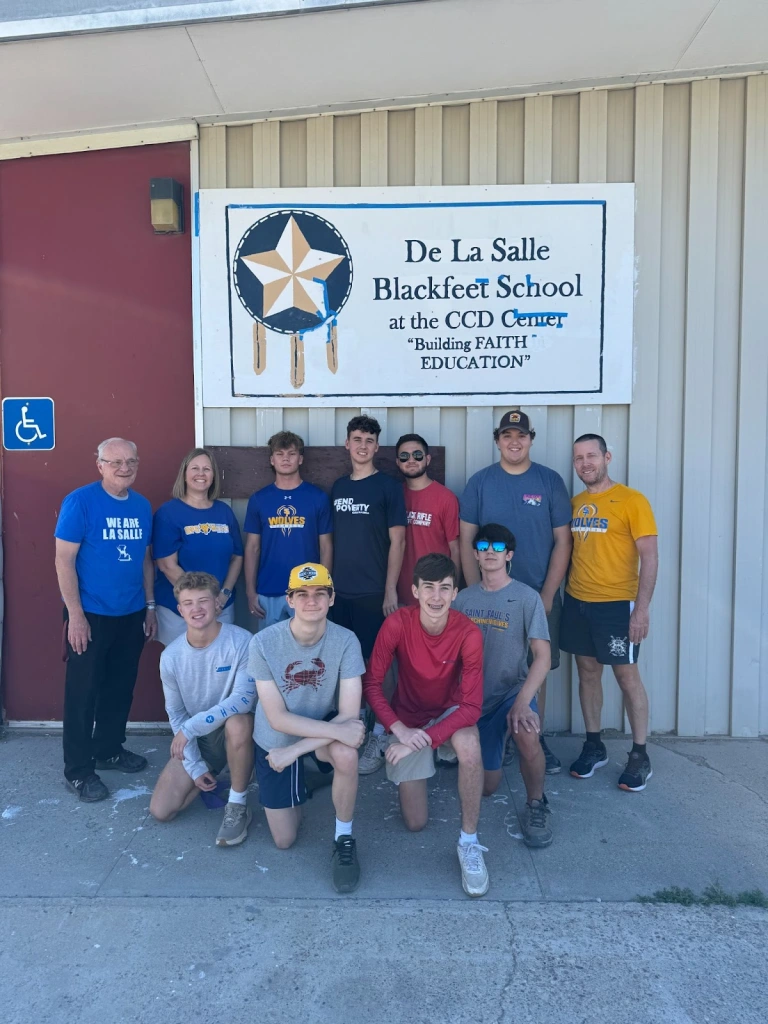
Published by jonahweigel2025
Back to Wolf Pack Press